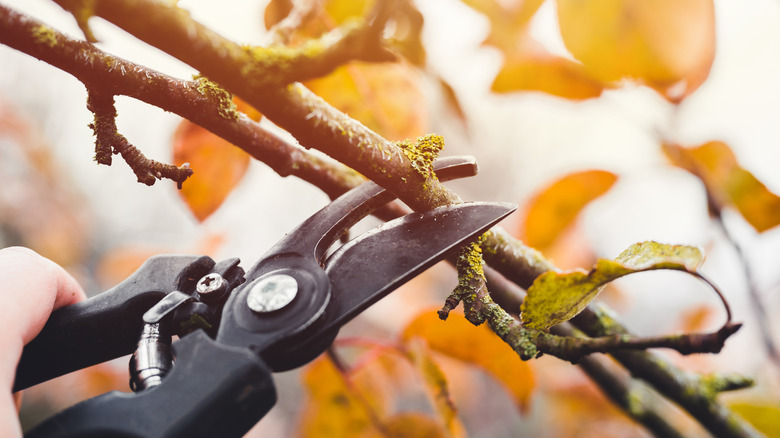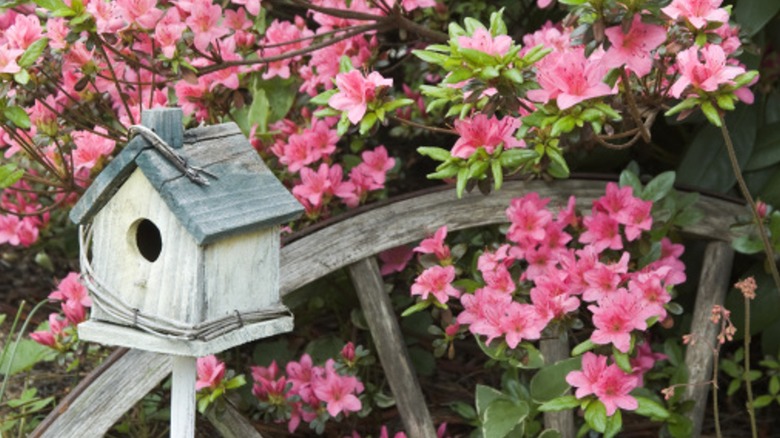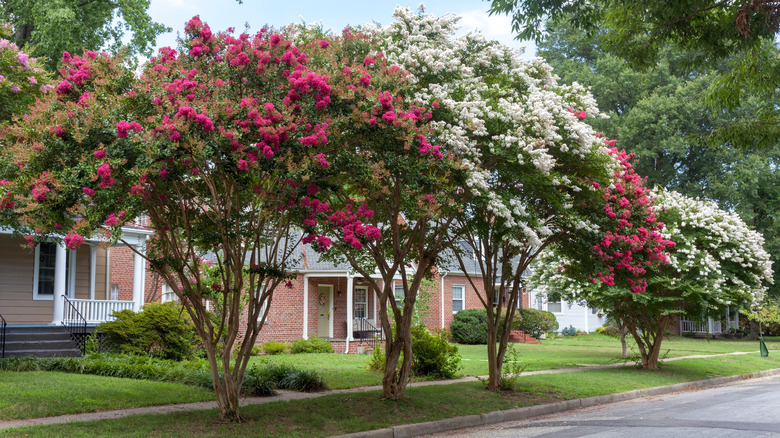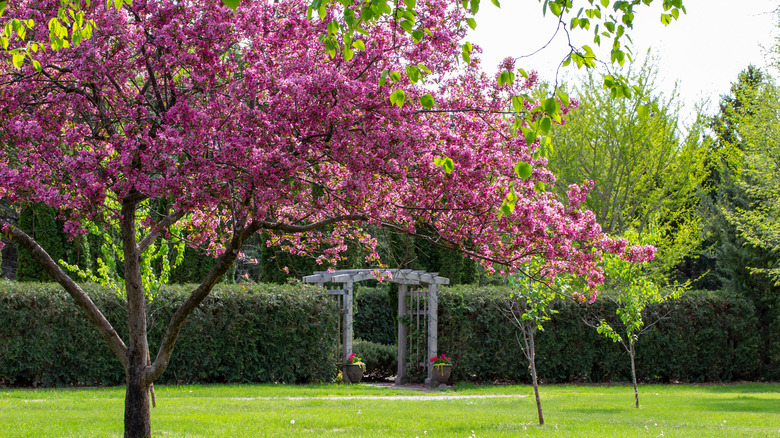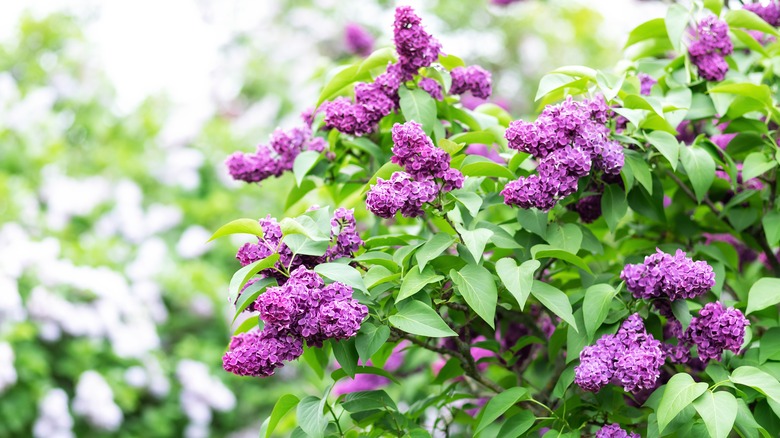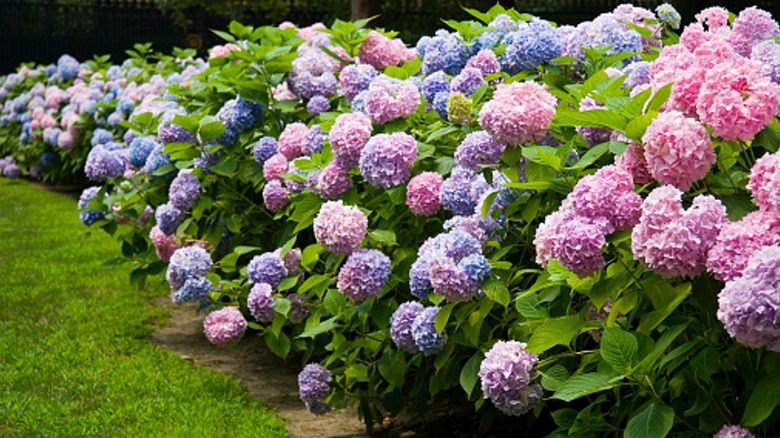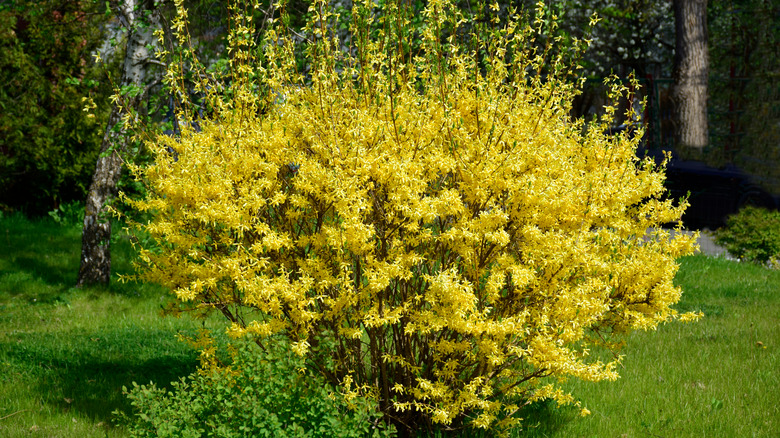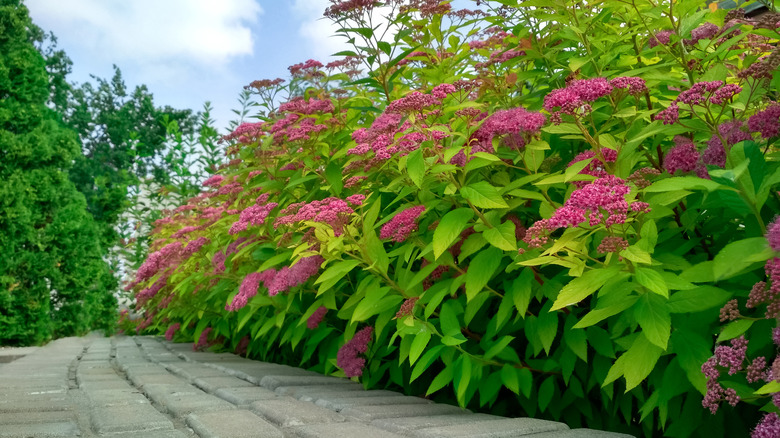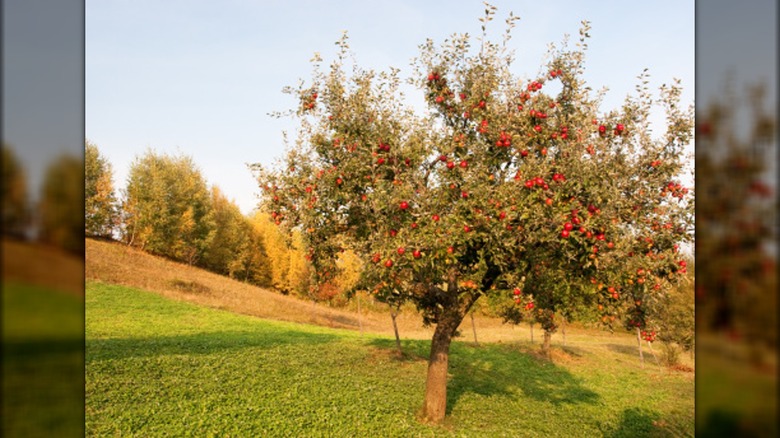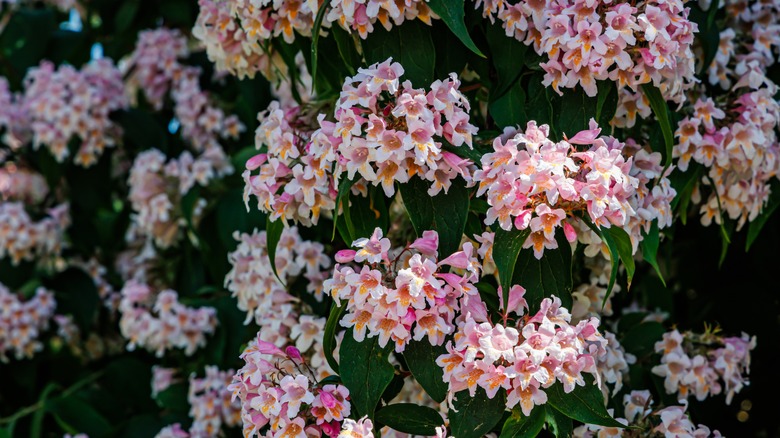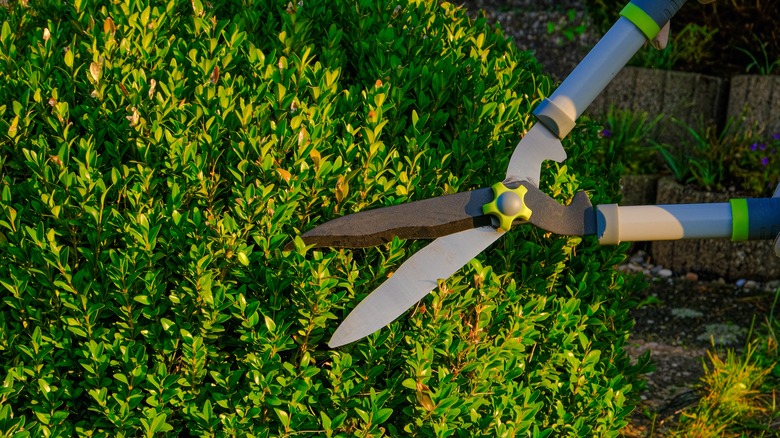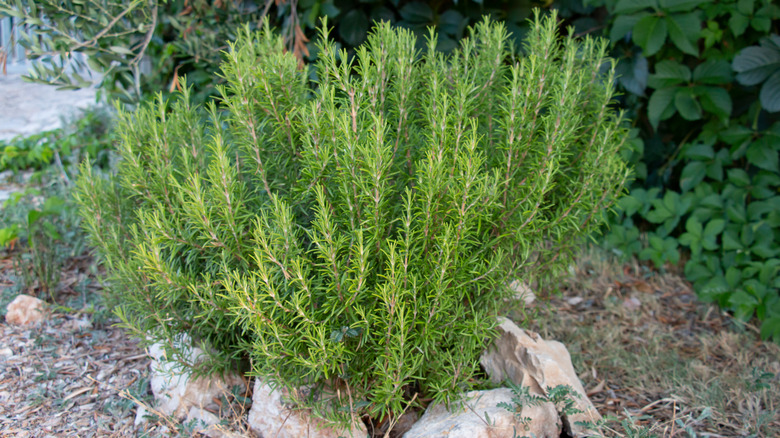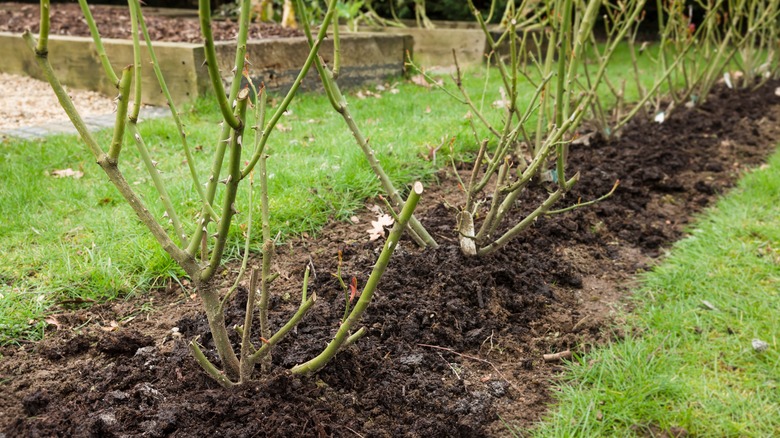Plants You Shouldn't Be Pruning In The Fall
Can you really call it yard "work" when it's so enjoyable in the fall? As the leaves change and the days grow cooler, it is nice to get outside and breathe in the fresh air while tidying your outdoor space. Cleaning up your yard is a rewarding task that works those gardening muscles, but while you are feeling zealous about working outside, there are some situations in which you should put the loppers down.
If you have a lot of trees and bushes in your landscape, it can be hard to remember when each one should be pruned. As a general rule, most greenery that blooms should be pruned right after they have finished putting on their show — but this is gardening, and there are exceptions to every rule. Before you pick up your tools, it is important to know if the plants you plan to prune bloom are on old or new wood. For example, some hydrangeas bloom on old wood; those are the stems that grew last year. Others produce flowers on this year's growth. If you remove those stems at the wrong time, you will lose all your gorgeous blooms for next season. The first step to pruning is identifying what plants you have and then finding out when they should be pruned.
1. Azaleas
Spring-blooming azaleas should be pruned when their flowers have faded. Most of the older varieties of azaleas fall into this category; however, this is why it's so important to know what you're growing. Encore azaleas bloom in spring, summer, and fall, but even these specific types benefit most from a light pruning right after they bloom in the spring. Because azaleas start setting next season's buds a few months after their flowers fade, pruning in the fall will remove most of next spring's blooms.
2. Crape myrtles
In hardy regions, crape myrtles start breaking dormancy around March and bloom from early summer through fall. Since these beautiful bushes produce flowers on new wood, they should be pruned in February, just before they start putting on new growth. Because crape myrtles bloom through the fall, waiting to prune until they finish blooming removes the plant's protective layer. These branches help the bush survive the cold winter. Not only does this help the plant, but birds will enjoy a spot to rest while feeding on the seed heads left behind by last season's blooms.
3. Crabapples
Crabapple trees require minimal pruning. These lovelies put on a stunning floral show in the spring before producing tiny fruits that birds and other wildlife feed on throughout the summer. Like most small trees, pruning requirements for crabapples are limited in shape and size. You can make any necessary cuts on your trees after they go dormant in the late winter or the early spring before bud break. You will be able to see any damaged or crossing branches that should be removed and prune off, any branches that are too low on the trunk.
4. Lilac
Lilacs follow the general rule for spring pruning. Like azaleas, they should be pruned right after they drop their amazingly fragrant flowers. After their blooming season has passed, they will get right to work producing buds for next spring's flowers, so waiting until fall will reduce or entirely eliminate your chance to enjoy those beautiful blooms next year. Pruning lilacs is not a necessity unless you want to keep it a certain size or it has damaged limbs. Older bushes may benefit from rejuvenation pruning, which involves removing the oldest canes at the ground level.
5. Some hydrangeas
Knowing when to prune hydrangeas is a little tricky because it depends on the type. As we mentioned, some varieties bloom on last year's growth, and some bloom on new wood that emerges in the spring. Avoid pruning hydrangeas that bloom on old wood in the fall because these types will provide next year's blooms on this year's growth. The easiest method for pruning hydrangeas is to remove stems that have produced flowers this year at the end of summer when they have stopped blooming. Hydrangeas only produce blooms on a stem for one year.
6. Forsythia
Forsythia is a stunning, hardy, and fast-growing bush. These plants are some of the earliest blooming bushes in the spring, bursting with bright yellow blooms to remind us of the impending arrival of warmer days. Forsythia is one of those bushes that is almost impossible to kill, so no matter when you prune it, this plant will almost certainly survive. But if you want to keep all those stunning flowers, don't prune them in the fall. Follow the "prune after it blooms" rule to get the most vibrant display from your forsythia next spring.
7. Spirea
Spirea plants come in a variety of shapes and colors, some of which put on a gorgeous fall foliage display. These bushes are similar to hydrangeas in that different types bloom at different times, so you need to know which kind you have. Some spirea varieties bloom in the spring, while others bloom in the summer. Spring blooming varieties produce flowers on old wood, so they should be pruned after they are finished blooming in late spring. Summer blooming varieties bloom on new wood, so they can be pruned in the fall.
8. Fruit trees
Clearly, the "prune after it blooms" rule does not apply to fruit trees because after they bloom, those fertilized flowers produce fruits. Like crabapples, all these trees should be pruned after they go dormant — long after the fruit has been harvested and all the leaves have dropped. Unless you are pruning your trees into a certain shape, like the exotic espalier method, you only need to remove damaged or crossing branches. If your tree is reaching maturity, you may want to remove some lower branches to raise the canopy and make it easier to mow around.
9. Beautybush
This is a plant that truly lives up to its name, but without regular pruning, you can miss out on part of the show. Beautybushes bloom on new and old wood, which means when they produce flowers in the spring, it is a symphony of tiny bell-shaped blooms beloved by bees and butterflies. Since they grow up to 10 feet tall and about as wide, they need a lot of space, but you can control the size by removing a ⅓ of the plant in late spring or early summer when it has finished blooming.
10. Boxwoods
Boxwoods are grown for their ability to be formed into any shape. However, these evergreens take several years to reach the maintenance stage via pruning and shaping. But once they reach the size and design you want, you can remove stray branches any time of year. Pruning for shape and size should be done in the spring before the bushes start putting on new growth.
11. Rosemary
You can take cuttings of rosemary anytime you need it for your culinary needs, but if you live in a region where rosemary is a perennial, regular pruning will help it grow. While rosemary blooms aren't big and showy, they are sweet little flowers that offer food for beneficial insects just emerging from their winter slumber. Prune rosemary after those blooms fade and dry your cuttings to use year-round.
12. Knockout Roses
Knockout roses are easy to grow and are not as susceptible to disease and fungal issues as classic varieties. These hardy flowers benefit from a harsh pruning in late winter before they start producing new growth. For the most prolific blooms, prune off a ⅓ of the plant to give you the size and shape you want for your space. Remove any crossing or damaged branches at this time.
